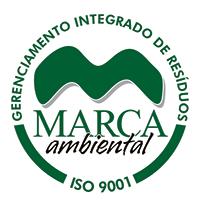| Curiosity (text): |
There‘‘s an old joke about the number of people it takes to change a light bulb. But because the newer energy-efficient kinds contain tiny amounts of mercury, the hard part is getting rid of them when they burn out, reports ENN citing Reuters.
Mercury is poisonous, but it‘‘s also a necessary part of most compact fluorescent bulbs, the kind that environmentalists and some governments are pushing as a way to cut energy use.
With an estimated 150 million CFLs sold in the United States in 2006 and with Wal-Mart alone hoping to sell 100 million this year, some scientists and environmentalists are worried that most are ending up in garbage dumps.
U. S. regulators, manufacturers and environmentalists note that, because CFLs require less electricity than traditional incandescent bulbs, they reduce overall mercury in the atmosphere by cutting emissions from coal-fired power plants. But some of the mercury emitted from landfills is in the form of vaprous methyl-mercury, which can get into the food chain more readily than inorganic elemental mercury released directly from a broken bulb or even coal-fired power plants, according to government scientist Steve Lindberg.
The mercury content in the average CFL -- now about 5 milligrams -- would fit on the tip of a ballpoint pen, according to the U. S. Environmental Protection Agency, and manufacturers have committed to cap the amount in most CFLs to 5 milligrams or 6 milligrams per bulb. The majority of Philips Lighting‘‘s bulbs contain less than 3 milligrams, and some have as little as 1.23 milligrams, said spokesman Steve Goldmacher.
To prevent mercury from getting into landfills, the EPA, CFL makers and various organizations advocate recycling. Besides commercial recyclers and some municipal waste collection services, some retailers accept used CFLs.
IKEA, the Swedish home furnishings chain, has free drop-off programs at all of its 234 stores, 29 of which are in the United States. Spokeswoman Mona Astra Liss said response was slow at first, but has since picked up. Now advocacy groups are calling on Wal-Mart Stores Inc. and other big chains to get involved.
Andy Ruben, vice president for corporate sustainability at Wal-Mart, said the company was working with the EPA‘‘s Office of Solid Waste and others to find mercury and recycling solutions.
Recycling hurdles
One problem with recycling is that it isn‘‘t cheap. Costs can range from 20 cents to 50 cents per bulb -- not a paltry sum when some CFLs sell for less than US$2 at Wal-Mart.
Another obstacle lies in the fragility of the bulbs and their mercury content.
The U. S. government has no single recycling plan in mind, said Matt Hale, director of the EPA‘‘s Office of Solid Waste.
Among the alternatives are special curbside collections by municipalities, mail-back programs by manufacturers and drop-off programs at various places, including retail stores that sell CFLs, he said. Some methods lend themselves to certain geographic areas more than others, Hale said, because of differences in population density, transportation infrastructure and proximity to recycling sites.
State laws are also a factor.
Federal regulations mandate recycling of fluorescent lighting, while exempting households and other small users. Some states, however, are strict. For example, California no longer allows anyone to throw CFLs in the trash, while Massachusetts requires manufacturers to implement recycling programs and meet certain targets.
As technology advances, however, mercury could become less of an issue, at least as far as light bulbs are concerned.
Last month General Electric Co. said it was working on doubling the energy efficiency of incandescent lights and eventually developing versions comparable with CFLs. These bulbs, which the company hopes |










 the news file
the news file